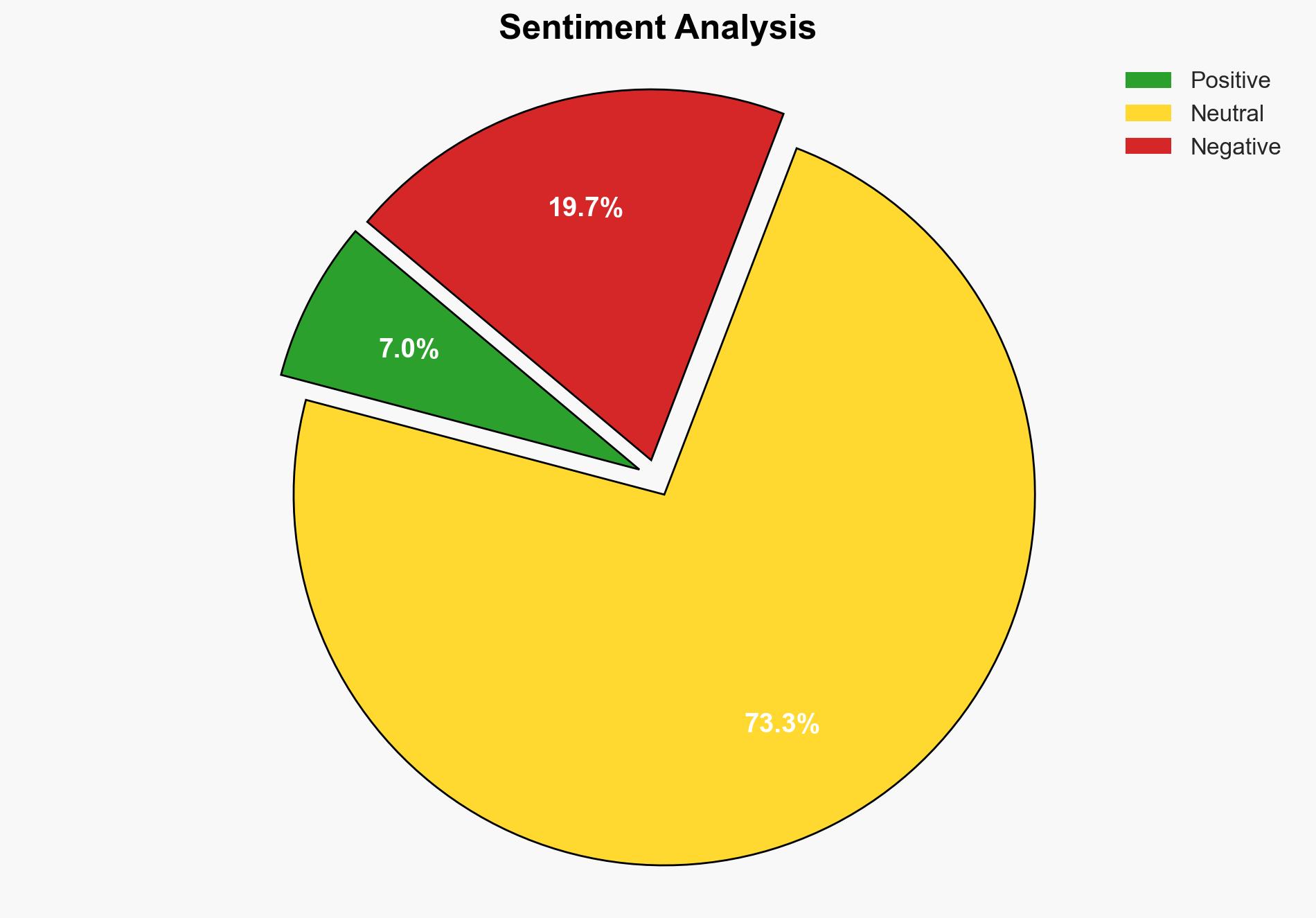Experts warn of a coordinated surge in the exploitation attempts of SSRF vulnerabilities – Securityaffairs.com
Published on: 2025-03-13
Intelligence Report: Experts warn of a coordinated surge in the exploitation attempts of SSRF vulnerabilities – Securityaffairs.com
1. BLUF (Bottom Line Up Front)
Recent observations indicate a coordinated surge in exploitation attempts targeting Server-Side Request Forgery (SSRF) vulnerabilities, notably through platforms such as Grafana. The activity suggests a strategic effort by threat actors to leverage these vulnerabilities for deeper network penetration and data exfiltration. Immediate action is required to patch affected systems and enhance monitoring capabilities to mitigate potential breaches.
2. Detailed Analysis
The following structured analytic techniques have been applied for this analysis:
General Analysis
The threat intelligence firm Greynoise has identified a significant increase in SSRF exploitation attempts since March. These attempts are characterized by the use of Grafana as an initial entry point, suggesting a coordinated attack strategy. The exploitation of SSRF vulnerabilities enables attackers to access sensitive configuration files and internal network details, indicating a reconnaissance-driven approach. Multiple platforms, including Zimbra Collaboration Suite, GitLab, and VMware, have been targeted, with notable activity in the United States, Germany, Singapore, India, Lithuania, Japan, and Israel. The pattern of attacks suggests automation and pre-compromise reconnaissance typical of botnet activity.
3. Implications and Strategic Risks
The coordinated exploitation of SSRF vulnerabilities poses significant risks to national security, regional stability, and economic interests. The ability of attackers to pivot from SSRF vulnerabilities to broader cloud exploitation could lead to widespread data breaches and infrastructure compromises. The affected regions and sectors may experience increased cyber espionage and disruption of critical services, impacting both governmental and private entities.
4. Recommendations and Outlook
Recommendations:
- Organizations should promptly patch and secure affected systems, particularly those using Grafana and other identified platforms.
- Implement robust monitoring and alerting systems to detect suspicious outbound requests and potential SSRF exploitation attempts.
- Restrict outbound access to critical endpoints and enhance network segmentation to limit lateral movement by attackers.
- Consider regulatory and organizational changes to improve cybersecurity resilience and response capabilities.
Outlook:
In the best-case scenario, rapid response and mitigation efforts will contain the current surge and prevent further exploitation. In the worst-case scenario, failure to address these vulnerabilities could lead to significant data breaches and operational disruptions. The most likely outcome involves continued attempts by threat actors to exploit SSRF vulnerabilities, necessitating ongoing vigilance and adaptation of cybersecurity strategies.
5. Key Individuals and Entities
The report mentions significant individuals and organizations involved in the analysis and response to the SSRF exploitation surge. Notable entities include Greynoise and platforms such as Grafana, Zimbra Collaboration Suite, GitLab, and VMware.





